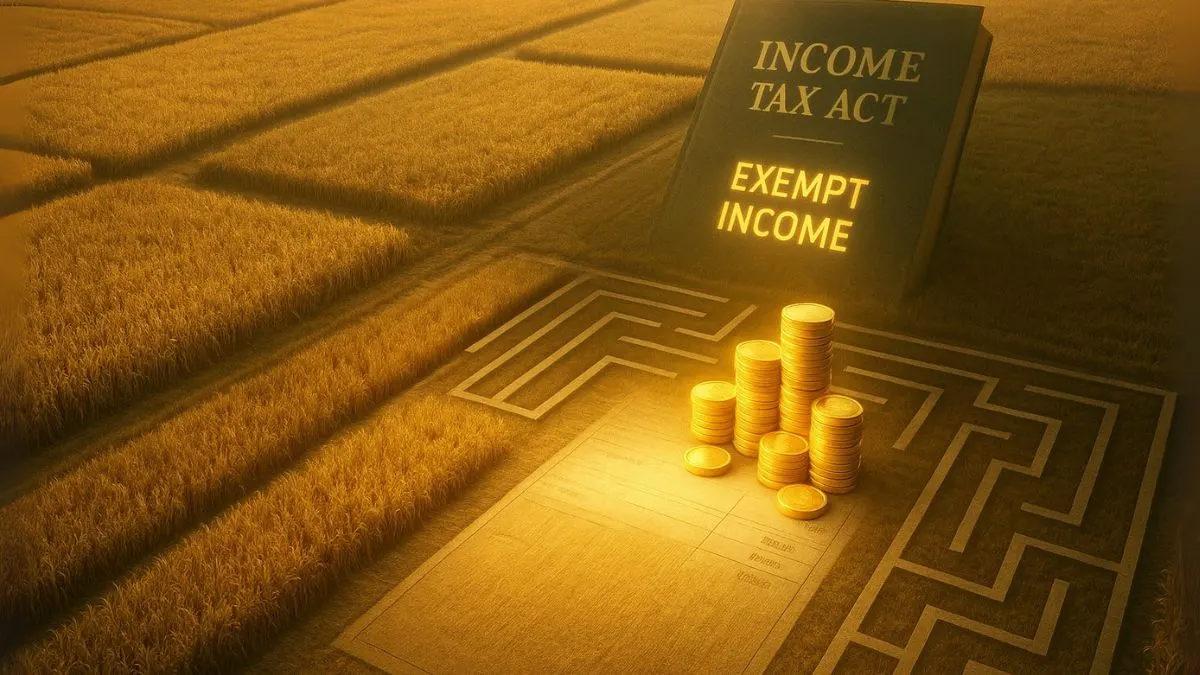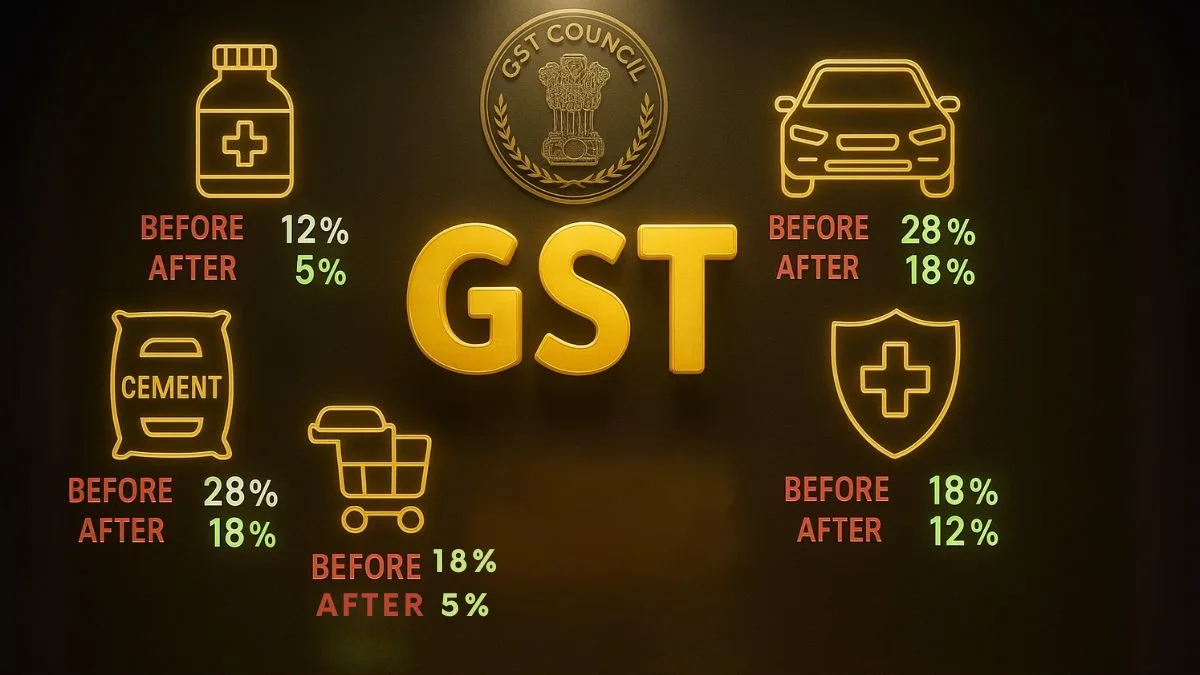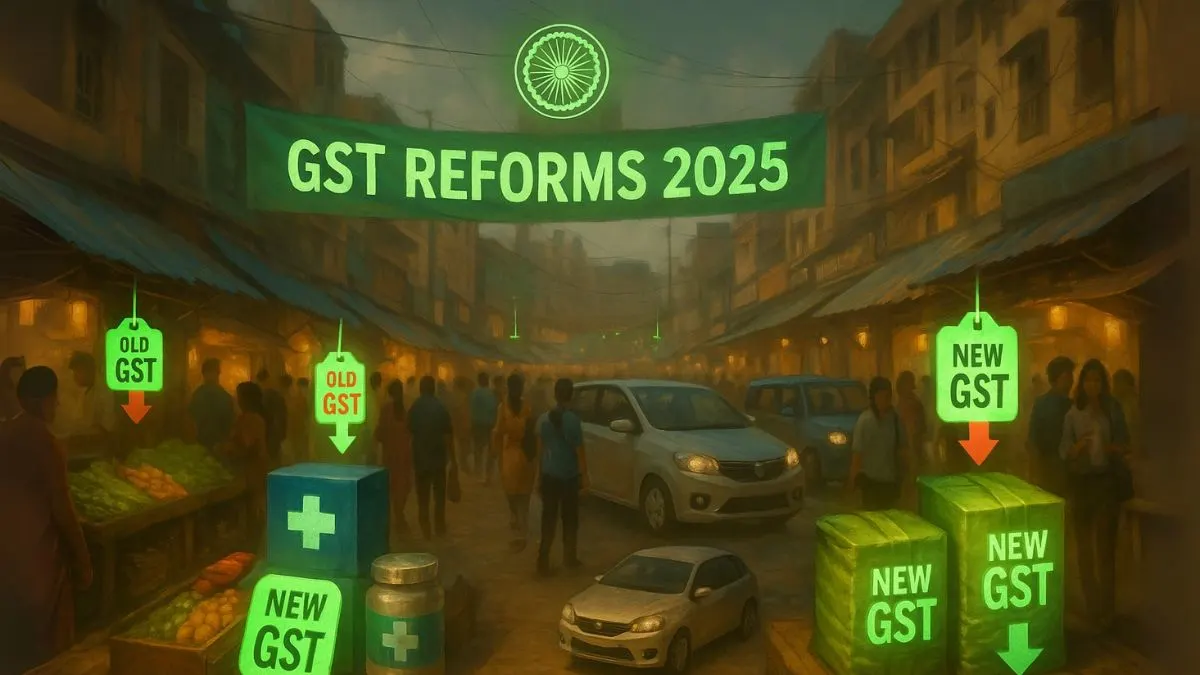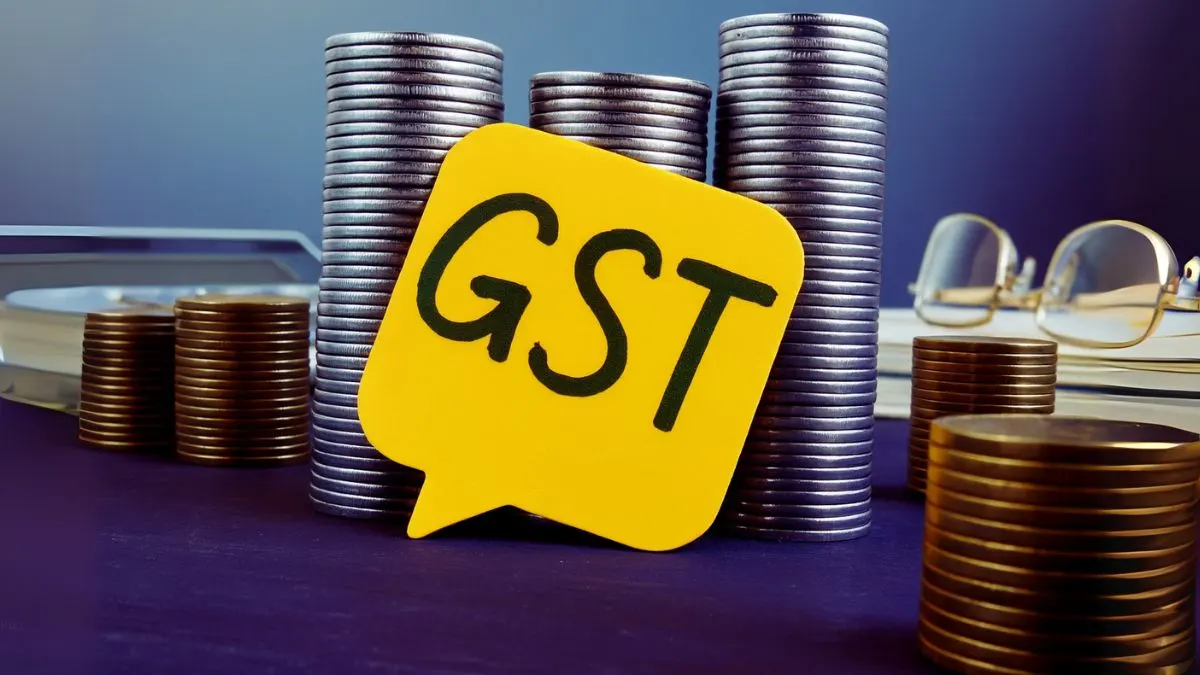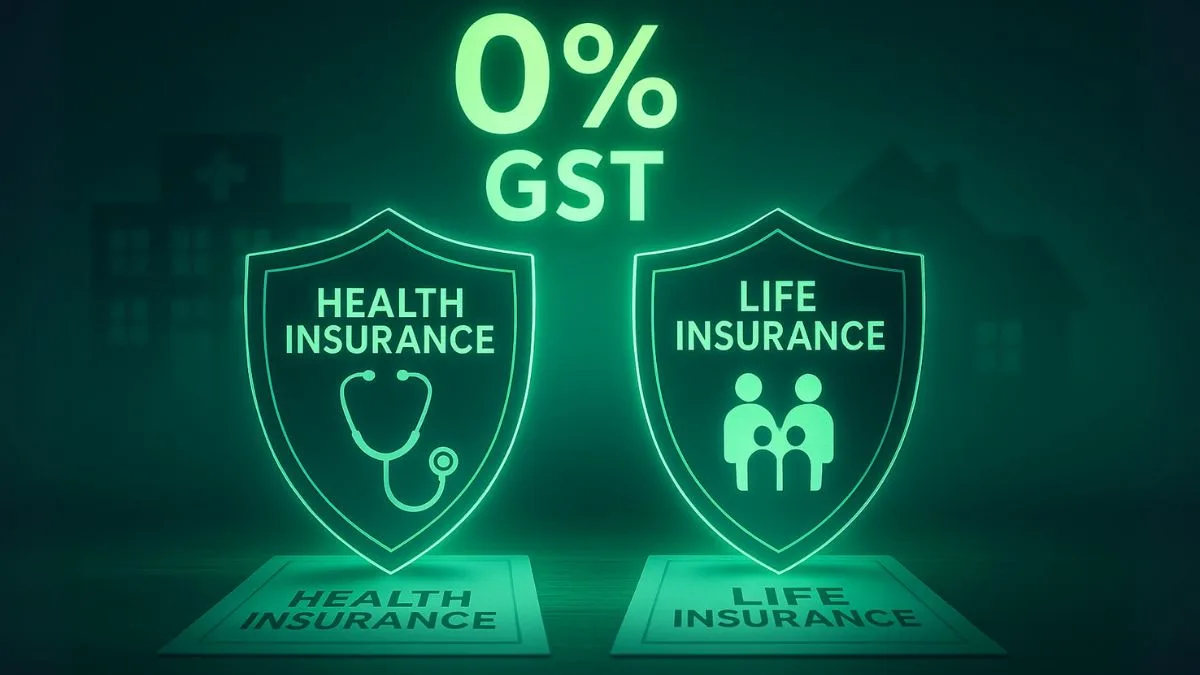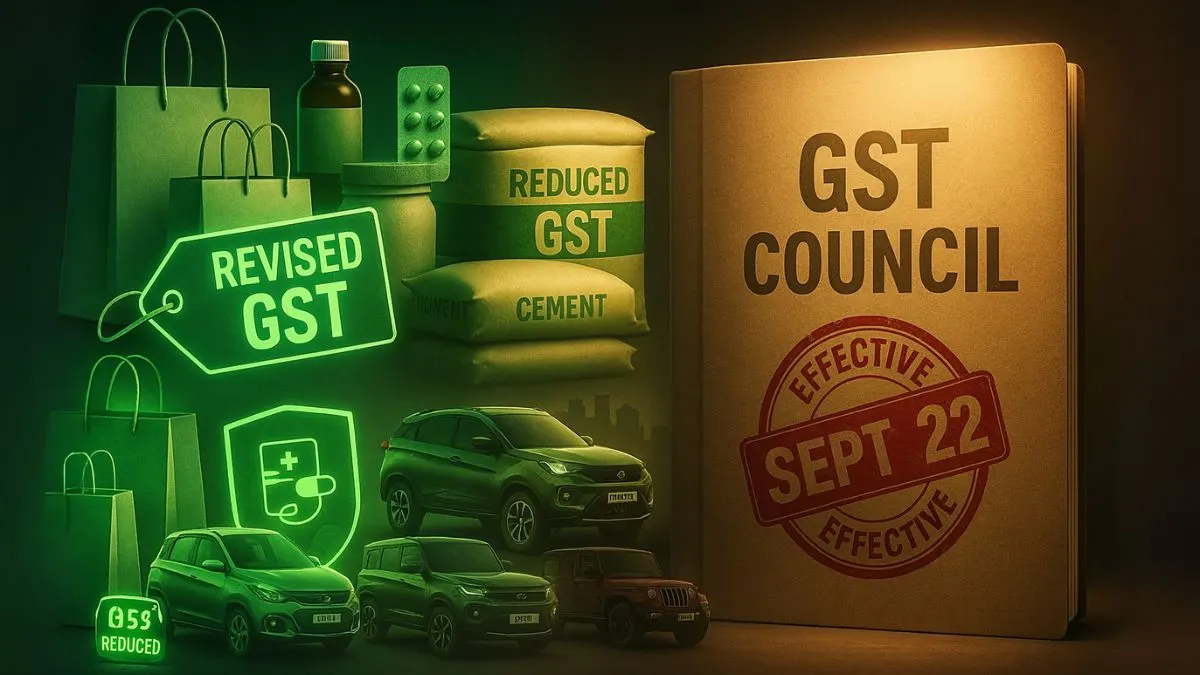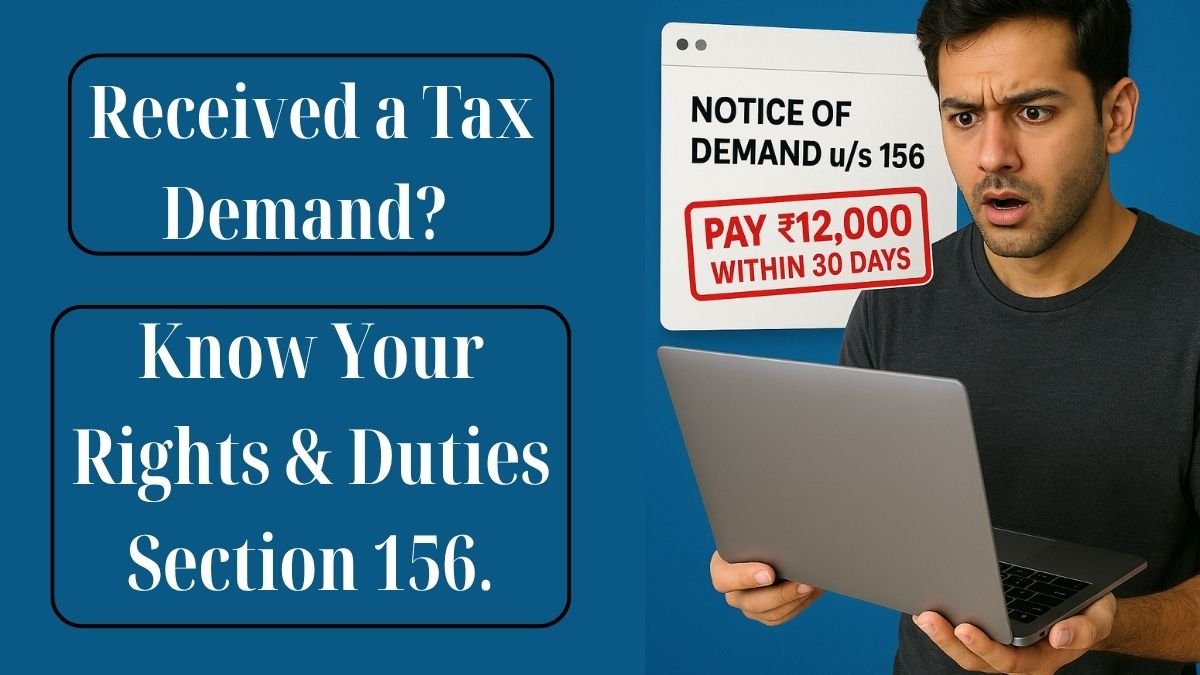
Let’s say you just filed your ITR and everything seemed fine—until a notice shows up asking you to pay more tax. That demand isn’t random. It’s issued under Section 156 of the Income Tax Act.
This section empowers the Assessing Officer (AO) to serve a Notice of Demand after an assessment or reassessment. It is an official communication from the Assessing Officer (A.O.) that tells you exactly how much you still owe the department.
It could include:
- Additional tax
- Interest
- Penalty
- Fines
- Or any other sum payable
🔍 Why is Section 156 Important?
It brings clarity and finality to an assessment. After all computations are complete, and if you owe anything more, Section 156 specifies the additional tax amount that you need to pay.
Think of it as the Income Tax Department saying:
“Here’s what we calculated. And here’s what you still owe us.”
🧠 When is the Notice Issued?
You may receive this notice after:
- A regular assessment (u/s 143(3))
- Best judgment assessment (u/s 144)
- Reassessment (u/s 147)
- Rectification of mistake (u/s 154)
In short, when any tax, interest, penalty, fine or any other sum is payable, this notice follows. "
📬 Format and Contents of the Notice
A typical Notice under Section 156 includes:
- PAN and assessment year
- Reference to the section under which the demand arises
- Nature of the amount (tax, penalty, interest, etc.)
- Due date to make the payment (generally 30 days)
- AO’s name, designation, and digital signature
The tone may be formal, but it’s not accusatory—it’s procedural.
💡 Example to Make It Simple
Suppose after scrutiny, the department finds ₹25,000 additional tax due to disallowed deductions.
You’ll receive a Notice under Section 156 specifying ₹25,000 applicable interest. That’s your final bill to settle.
No more guesses. It tells you the exact amount and the due date. Miss it? You may attract further penalties or prosecution under other sections. "
🧾 Is This a Final Assessment?
Not really. You still have options if you disagree with the amount.
Many taxpayers search:
Appeal against section 156 of the Income Tax Act
Yes, you can file an appeal before the Commissioner of Income Tax (Appeals) if you believe the demand is incorrect. But until the appeal is admitted, the notice is valid.
Also, make sure to respond even if you're filing an appeal—non-response may lead to recovery proceedings.
📅 Time Limit and Compliance
One common doubt: Is there a time limit under section 156 of the Income Tax Act?
The law says payment must be made within 30 days from the date of service of notice unless a shorter period is mentioned.
Ignoring the notice can result in:
- Attachment of bank accounts
- Seizure of property
- Penalty u/s 221
- Interest u/s 220(2)
So yes, take it seriously.
💬 Can You Get a Section 156 Notice After Refund?
Strangely, yes. If the refund was issued based on incorrect data, or an underreporting is detected later, a revised assessment may lead to such a notice. This happens commonly in rectification cases (u/s 154) or through AIS/TIS data mismatch.
📘 Section 156 in Hindi (Simplified)
Many users search for section 156 of income tax act in Hindi. Here's a quick version:
"जब आयकर विभाग को यह लगता है कि आपने अतिरिक्त टैक्स, ब्याज, पेनल्टी या अन्य कोई रकम चुकानी है, तो वह धारा 156 के तहत एक नोटिस जारी करता है जिसमें यह राशि और भुगतान की अंतिम तिथि स्पष्ट रूप से बताई जाती है।"
📂 Related Documents & Downloads
If you're looking for Section 156 of the Income Tax Act PDF, you can get it from:
- incometaxindia.gov.in
- Tax resources like Taxmann or TaxGuru
- Or log in to the income tax login portal to download your notice
You’ll also find templates of replies for notice of demand under section 156 on those sites.
⚖️ Legal Insight from the Bare Act
The bare act of Section 156 is straightforward:
“When any tax, interest, penalty, fine or any other sum is payable in consequence of any order passed under this Act, the Assessing Officer shall serve upon the assessee a notice of demand.”
Simple, but powerful. It starts the department’s collection process.
🧾 Summary Table
|
Particulars |
Details |
|
Section |
156 of the Income Tax Act |
|
What it is |
Notice of Demand |
|
Issued by |
Assessing Officer |
|
Applicable when |
Any additional amount is payable post-assessment |
|
Time to pay |
Within 30 days |
|
Legal recourse |
File an appeal (if applicable) |
|
Common keywords |
demand under section 156, appeal against section 156, tax notice 156 |
✅ Final Thoughts
Section 156 of the Income Tax Act may sound intimidating, but it’s just a formal demand for payment after the assessment process is done. If any tax, interest, penalty, fine or any other sum is payable, you’ll get this notice.
Don’t ignore it. Don’t panic either. It’s simply an official communication from the Assessing Officer (A.O.) telling you what’s due and by when.
💬 Got a notice under Section 156?
Our tax experts at CallMyCA.com can help you respond or file an appeal, if needed.


